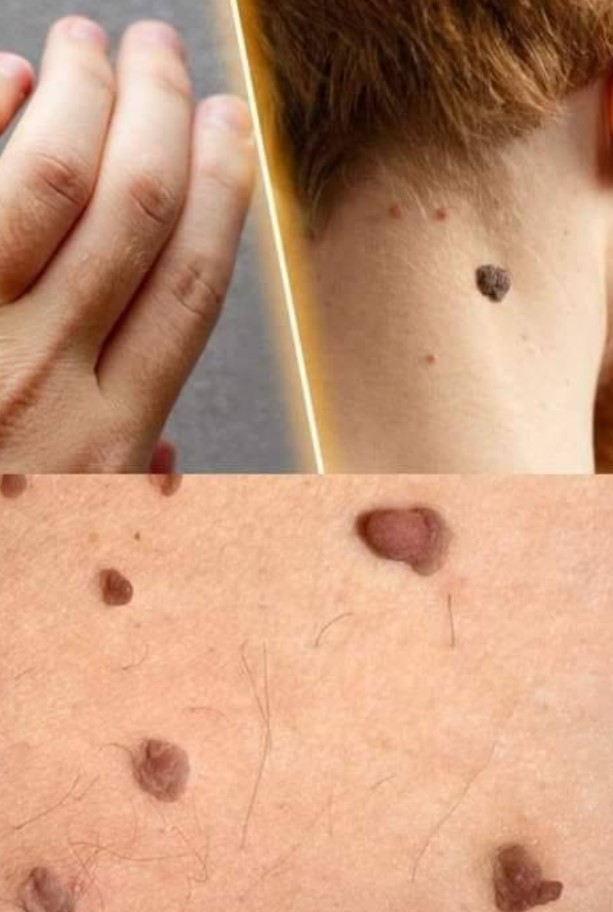Skin tags and warts can be pesky little annoyances that many people encounter at some point in their lives. While they are generally harmless, their presence can be bothersome and affect one’s self-esteem. Fortunately, there are safe and effective methods to remove these skin imperfections from the comfort of your own home. This guide will explore various techniques, providing you with the knowledge you need to take care of these common skin issues quickly and safely.
Understanding Skin Tags and Warts
Before diving into removal methods, it’s essential to understand what skin tags and warts are. Skin tags are small, benign growths that often appear on the neck, armpits, and eyelids. They are typically harmless but can be bothersome due to their appearance or friction against clothing.
Warts, on the other hand, are caused by the human papillomavirus (HPV) and can appear anywhere on the body. They are rough, raised bumps that may be skin-colored or darker. While they are also benign, they can be contagious and may spread through direct contact.
Safe and Effective Methods for Removal
1. Apple Cider Vinegar Treatment
Apple cider vinegar (ACV) is a popular natural remedy known for its acetic acid content, which can help break down skin growths.
How to Use:
- Soak a cotton ball in apple cider vinegar.
- Apply it directly to the skin tag or wart and secure it with a bandage.
- Leave it on overnight and repeat nightly until the growth falls off.
2. Tea Tree Oil
Tea tree oil is renowned for its antiviral and antifungal properties, making it an effective choice for wart treatment.
How to Use:
- Mix a few drops of tea tree oil with a carrier oil, like coconut oil.
- Apply the mixture directly to the wart or skin tag.
- Cover with a bandage and leave it on overnight. Repeat daily until the wart or tag disappears.
3. Garlic Paste
Garlic has potent antiviral properties that can help eliminate warts and skin tags.
How to Use:
- Crush a clove of garlic and mix it with a little olive oil to form a paste.
- Apply the paste to the affected area and cover with a bandage.
- Leave it on overnight, rinsing off in the morning. Repeat daily for a week or until the growth disappears.
4. Duct Tape Method
This unconventional method has gained popularity for its simplicity and effectiveness.
How to Use:
- Cut a small piece of duct tape and place it over the wart or skin tag.
- Leave it on for six days, then remove the tape and soak the area in warm water.
- Gently rub the growth with a pumice stone or emery board. Reapply duct tape for another six days if necessary.
5. Banana Peel
The enzymes in banana peels can help break down skin growths.
How to Use:
- Cut a small piece of banana peel and place the inner side against the skin tag or wart.
- Secure it with tape or a bandage and leave it on overnight. Repeat nightly for several days.
Additional Tips for Success
- Keep the Area Clean: Before applying any treatment, make sure the area is clean and dry to enhance absorption and efficacy.
- Patience is Key: Natural remedies can take time to show results. Be consistent and give each method a fair chance before switching.
- Consult a Professional: If you experience pain, bleeding, or signs of infection, consult a dermatologist. Some growths may require medical attention.
Conclusion :
In summary, dealing with skin tags and warts can feel overwhelming, but it doesn’t have to be. The methods outlined in this guide empower you to take control of your skin health with safe and effective home remedies. Natural options like apple cider vinegar and tea tree oil not only offer practical solutions but also harness the healing properties of ingredients you might already have in your kitchen.
It’s important to approach these treatments with patience. Natural remedies often require consistent application over several days or weeks to yield noticeable results. During this time, keep an eye on the affected areas to ensure that the treatments are effective and that no complications arise.
Moreover, while home treatments can be very effective, they are not suitable for everyone. If you experience persistent discomfort, irritation, or if the growths change in appearance, seeking professional advice from a dermatologist is crucial. A medical professional can provide a definitive diagnosis and recommend appropriate treatments that may be more effective for your specific skin condition.
Ultimately, maintaining healthy skin is an ongoing journey that involves good hygiene, regular skin checks, and a proactive approach to any changes you notice. By being informed and cautious, you can not only manage skin tags and warts effectively but also boost your overall confidence and well-being. Embrace your journey to clearer skin, and remember that taking care of your skin is a vital aspect of self-care. With the right methods and a little patience, you can achieve the smooth, clear skin you desire, allowing your natural beauty to shine through.
Source of the picture : Barbara O’Neill










